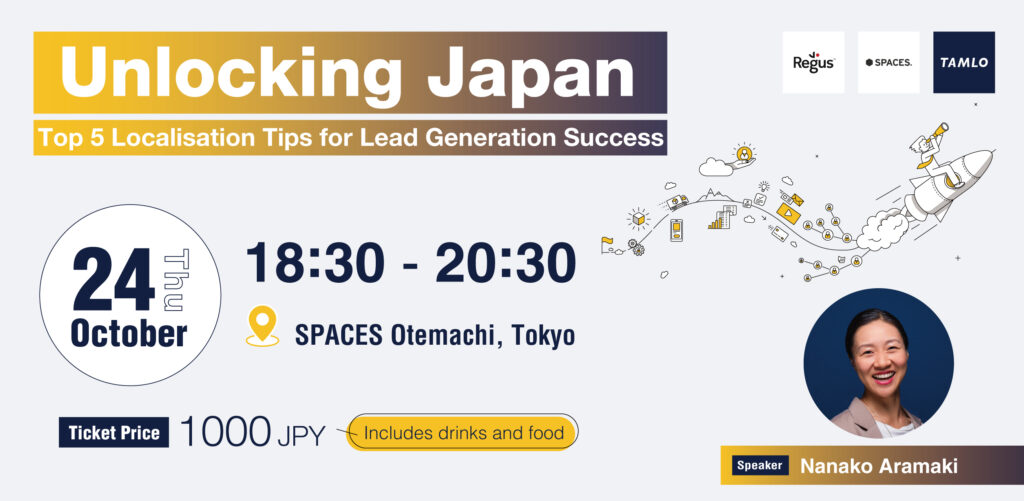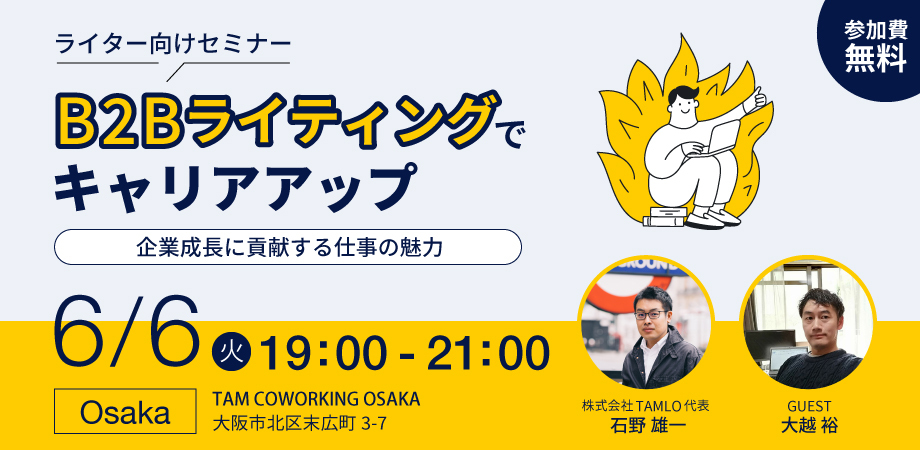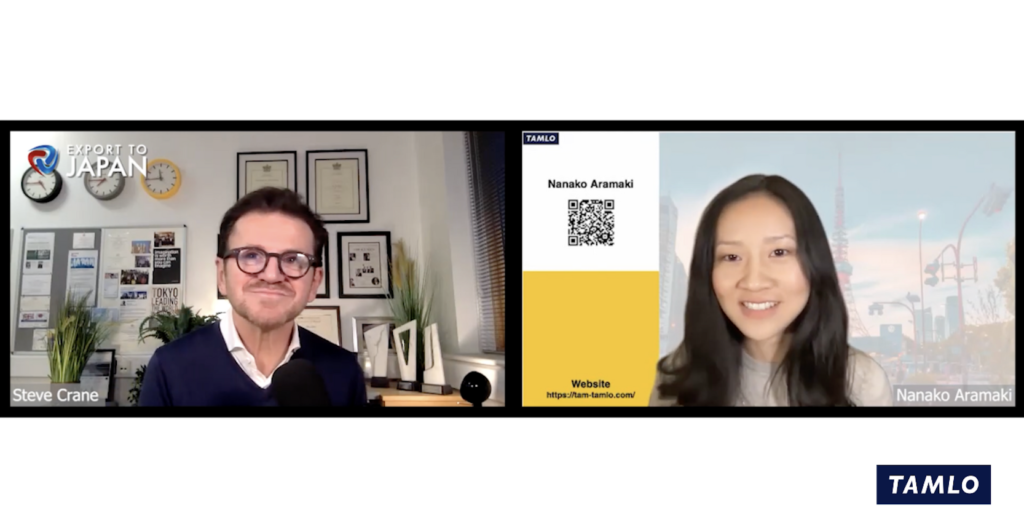Localisation Tips and Strategies for B2B companies in Japan

How overseas B2B companies can successfully use content marketing to succeed in the Japanese market.
TAMLO held an event on October 24, 2024 titled ‘Unlocking Japan: 5 Localisation Tips for Successful Lead Generation’. TAMLO COO and LinkedIn Top Voice Nanako Aramaki spoke to over 60 marketing and localisation professionals at SPACES Otemachi, Tokyo, about how to effectively generate leads in the highly unique and competitive Japanese market. Aimed at international firms in Japan, Nanako’s talk focused on how to effectively localise sales channels and what specific details marketers need to focus on to expand their presence in Japan. Afterwards, attendees and TAMLO members networked with each other to share knowledge and connect with other marketing and localisation professionals.
This article summarises the five key localisation strategies for B2B companies in Japan that Nanako shared in her talk.
Create an effective landing page (LP)
Landing pages (LPs) are the first point of contact that users have with companies. It is important to start building trust right away by providing relevant and important information, especially in the Japanese B2B market. When creating or localising an LP, pay attention to the following details:
Provide detailed information. Japanese users value information highly; the more you can offer to potential customers, the better. Make sure to include specific information like service features, technical specifications, and case studies to help convince your audience of your company’s value. Installation results and customer testimonials are also highly effective at increasing your credibility with site visitors.
Choose visuals that are tailored for Japan. Images and designs should be chosen carefully to make them appropriate for Japanese audiences. Large companies in Japan tend to favour subdued colours and simple, well-organised layouts. Using similar designs on your LP can make your brand more trustworthy to Japanese visitors.
Make site navigation simple and clear. It is vital to create an LP that is simple and intuitive to navigate so that visitors can access the information they want to see easily. Making your LP easy to navigate on mobile devices is also extremely important.
Include multiple Calls to Action (CTAs). Placing multiple CTA buttons in each section of the page makes it easy for visitors to take action at any stage in their journey through your LP. Japanese users in particular tend to consider information carefully, responding well to visual guidance. Including clear instructions about how users can further engage with your content will increase your chances of generating conversions.
Minimise the number of pages on your LP. Japanese users respond poorly to page transitions, so your LP will be more effective if you include contact forms and document download on the same page in order to provide users with a familiar and seamless experience.
Provide easy-to-download documents (white papers)
In Japan, white papers and detailed documentation are important tools for effectively swaying decision makers and potential customers. Japanese companies usually make decisions via ‘nemawashi’, the practice of coming to a unanimous team agreement by sharing information internally before taking any action. In order for your company to be considered in these kinds of decision-making processes, you must provide clear and accessible documentation for decision-makers to share with their team.
White papers, brochures, and case studies that organise product and service details in an easy-to-understand way are the most effective kinds of documentation you can provide. These kinds of materials help teams come to a consensus more quickly about whether or not your product or service is the solution they are looking for.
It is important to note that while demo requests are common outside of Japan, they are relatively rare in the Japanese market.
Optimise the contact form for Japan
Optimising your contact form is essential to generating leads in Japan. Many global companies have adapted their contact form to global standards, and there are many times when these forms have a significant negative impact on conversion rates with Japanese customers. To avoid making these mistakes, pay attention to the following points:
Make sure to put the ‘family name’ before the ‘first name’. In Japan, the family name is always placed before the given name, and disrupting this can be a telltale sign to Japanese audiences that your company has not yet fully adapted to doing business in Japan.
Set the default country to ‘Japan’. If your contact form lets users select their country, it will be more convenient for Japanese users if the default option is ‘Japan’.
Set the default phone number country code to ‘+81’. Setting the default phone country code to the Japanese area code will make it easier for Japanese users to input their information.
Minimise the number of required information fields. If your form is too long, it will take longer to fill out you risk users abandoning your page during conversion. Ideally, the amount of required information should be reduced to the bare minimum, with additional information collected later if necessary.
Select the most appropriate marketing channel
The most effective marketing channels for your company globally are probably different from the most effective marketing channels in Japan. By using local Japanese online media you can enhance your lead generation capabilities. Consider using the channels below to more efficiently reach your target audience.
Facebook: Facebook is often more effective for B2B marketing in Japan than other platforms like LinkedIn. Facebook ads also offer highly accurate targeting and segmentation, meaning you can target users from specific industries with specific job titles. This platform is particularly helpful for capturing leads because of these capabilities.
Yahoo! JAPAN and Bing: although Google is the leading search engine in terms of market share, Yahoo! JAPAN still has a significant amount of regular users in Japan, particularly with older demographics and in more rural areas, making it an effective platform for PPC advertising. Bing’s market share is also steadily increasing, and it is an effective platform for reaching certain B2B sectors.
Blogs: in Japan, blogs are an important channel for corporate content marketing. Recently, the blogging platform note has attracted a lot of attention as a platform for companies to build trust with readers. Ameba is also a large blogging platform, making it a great place to share B2B content. By sharing expert information through corporate blogs on Japanese platforms you can effectively engage your target audience and build credibility and trust.
Employ expert writers to create your Japanese content
Success in the Japanese market requires professional writers who are more than just translators. Your writers should be familiar with Japan’s unique business culture and be able to express your brand’s messaging in a way that resonates with your target audience. You should look for the following skills and expertise in order to find writers that can create content that is effective in Japan.
A deep understanding of your brand and market. You should search for writers who are able to accurately illustrate your company’s values and characteristics in a way that is digestible to Japanese audiences. Building trust and credibility with potential customers in Japan requires content that expresses an understanding of Japanese culture and business practices.
An understanding of your product and your customers’ needs. The Japanese focus highly on what value different products and services can provide for them and how their needs are being considered by vendors. Creating effective content requires writers who take the time to understand your USP and what kinds of problems it solves for your customers.
An understanding of your marketing goals. Creating content that properly aligns with your marketing goals, whether that be raising awareness or acquiring leads, requires experienced writers. Companies looking to succeed in Japan should search for writers who will pay close attention to their goals and create content with the right tone that encourages readers to the targeted conversion point.
Knowledge about best SEO practices. Writers who have experience writing SEO articles that include important, localised keywords are an invaluable asset for B2B marketing in Japan. SEO-savvy writers not only help you maximise your exposure on search engines, but they also have experience creating content that will actually engage your target audience and effectively support online customer acquisition.
TAMLO is a content marketing agency that supports global companies in the Japanese market with a focus on localised content and marketing strategies. Please feel free to contact us for a consultation or to find out more about who we are.




